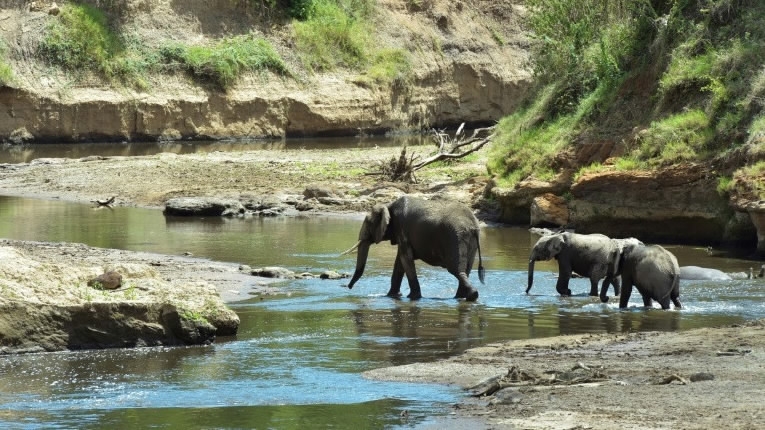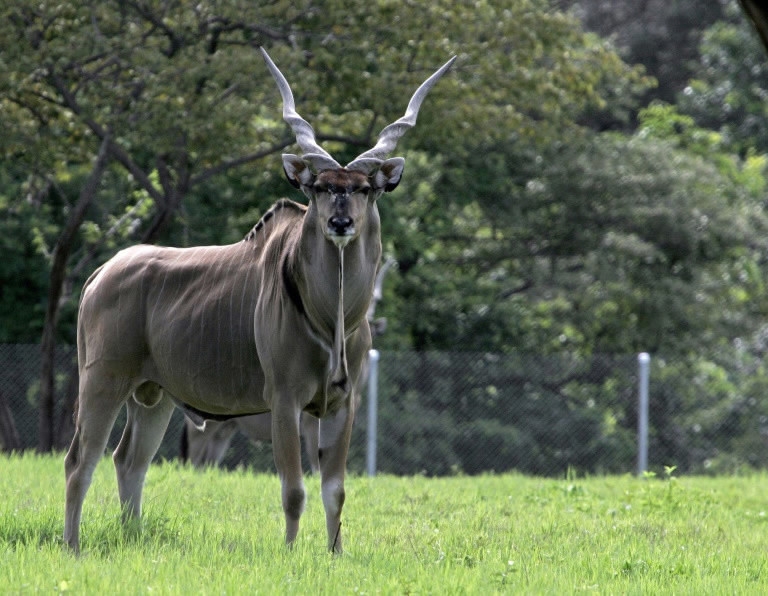
Animal
17:22, 09-Dec-2017
Militias, poachers 'wreak havoc' on central Africa's wildlife

Armed groups are heavily involved in wildlife poaching and trafficking across central Africa, a monitoring group has said.
A report by Traffic said Sudan's Janjaweed, Uganda's Lord's Resistance Army (LRA), and other rebel militias were threatening elephants, hippopotamuses, buffaloes and other animals.
They operate in central Africa’s Garamba-Bili-Chinko Landscape, a region that straddles the northwest border of the Democratic Republic of Congo (DRC) and the southwest border of the Central African Republic.
"The investigation into the poaching and trafficking of wildlife across the landscape ... reveals the enormous pressure placed on existing wildlife populations in these protected areas, particularly from such highly organized armed groups who are linked to human rights violations and ongoing political instability," a release from the UK-headquartered group said.
The report also blamed state actors, armed pastoralists, and poachers.
Joseph Kony, a self-styled mystic and prophet who launched a bloody rebellion three decades ago, "tasked a group of LRA fighters with obtaining 100 tusks... over the course of nine months" from the Garamba natural reserve in DRC, Traffic said.

Militias wreak havoc on central Africa's wildlife, the report said. /Photo via Reuters
Militias wreak havoc on central Africa's wildlife, the report said. /Photo via Reuters
The report also tracked poaching in Bili in DRC and the Chinko reserve in Central African Republic. The research covered nearly 90 villages in the region.
"This region is perhaps the most remote and underdeveloped on the continent," said Liz Williamson, one of the authors of the report.
"The lack of governance and enforcement has rendered local communities and wildlife an easy target for exploitation by armed groups, while illegal wildlife trade fuels continued instability across the landscape."
Exacerbating the problem was endemic corruption in a region mired in poverty, but things were improving in DR Congo where poaching by government soldiers has been declining in the past few years due to "stronger collaboration with park enforcement authorities," it said.
The pastoralist threat
But animals are also under threat from pastoralists like the Fulani, who are spread over a swathe of western and central Africa, and the Mbororo, a Fulani sub-group which kill Giant Eland – a Savannah antelope – and buffaloes "to sell as bushmeat and to poison predators.

Some African pastoralists are known to hunt the Giant Eland – a Savannah antelope – both for their meat and to use as poisoned bait for predators. /Photo via AFP
Some African pastoralists are known to hunt the Giant Eland – a Savannah antelope – both for their meat and to use as poisoned bait for predators. /Photo via AFP
"Fulani have also been reported as trafficking wildlife products such as ivory and leopard skins across borders, primarily to South Sudan and Uganda," Traffic said.
And there were armed "poachers targeting large mammals, including bongo, buffalo, elephant and hippopotamus in the protected areas" selling their meat to individuals and restaurants and transporting high-value products such as ivory, skins and other trophies further afield.
"Hunting serves as an income-generator for people living around protected areas and about 20 percent of men in northeast DRC reported that they engage in small-scale poaching," it said.
The International Union for Conservation of Nature (IUCN) has previously found that Africa's elephant numbers fell by 111,000 between 2006 and 2015.
The Convention on International Trade in Endangered Species said the elephant population in southern Africa and much of East Africa is now either stable or increasing but illegal killings remain high across the continent.
Source(s): AFP

SITEMAP
Copyright © 2018 CGTN. Beijing ICP prepared NO.16065310-3
Copyright © 2018 CGTN. Beijing ICP prepared NO.16065310-3